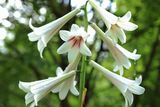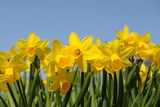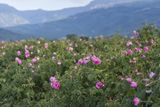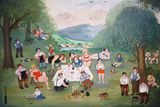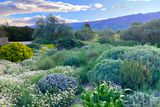Spruce and limber yellow bird
IN a wild hedgerow near Collen in Co Louth - where there is a remarkable military history museum - there was an amazing sight of a small group of yellowhammers.
One cock bird was prominent in its sparkling livery and confidence and the viewer, a regular correspondent, was astonished.
This bird is the last one, for alphabetical reasons, on the Red List of endangered species in Ireland and Britain compiled by the RSPB and BirdWatch Ireland. It is scarce and rarely seen.
It is amazing that some have found peaceful breeding areas in the turbulent landscape of modern agriculture with its mammoth machinery, noise and dust, monocultural tracts and hedgerow-levelling.
The yellowhammer, never a widely visible resident, seemed to have an aura of mystery about its movements and location, a now-you-see-me, now-you-don't bird, brilliantly visible and then gone, to re-appear elsewhere to make its best-known mnemonic sound, 'a-little-bit-of-bread-and-no-cheese'.
The poet William Allingham (Up the airy mountain, etc) heard its muted music from afar "upon the lonely path's green mound". It was "only the plaintive yellow bird/Sighing in the sultry fields around."
Coleridge, much more clumsily, but, perhaps, more accurately, heard the "spruce and limber yellowhammer" sounding like someone filing brass!
Mark Cocker, author and ornithologist, says that what the yellowhammer's performance may lack in quality or variety is more than compensated for by sheer stamina.
The power of its singing continues through the summer and Cocker maintains we hear its message subconsciously and that its sheer repetition creates a greater impression than louder or more melodious birds.
Robbie Burns, naughty laddie, has dug some dirt on the "Yellow, Yellow Yorlin", which I cannot find in Best Laid Schemes (Princeton University Press) but is revealed in Birds Britannica (Cocker and Mabey).
The 'yorlin' is Scots and, not surprisingly, also found in Northern Ireland, where, indeed, it may be considered vulgar.
My memories of yellowhammers go back to peaceful days in Mayo more than 40 years ago, times of calm fields of small cocks of sweet hay, like carefully assembled puddings, gathered after methodical turning and the sudden alarm of a bolting hare asking for a chase!
We did not see them in Meath but in the West they fluttered and flipped, Mayo and Leitrim always remaining close to the old ways, but changing now, too, as all things change.
There are now but a few thousand pairs where once there were 100,000. Be watchful and you may be rewarded with a lone bird on a wire or high perch in the sunny south-east or Donegal.
Groups sometimes appear in the autumn in coastal areas, but they are probably immigrants from northern Europe.
A glimpse of a more glorious past from The Birds of Ireland (Kennedy, Ruttledge 1954): "On the windswept Mullet and more exposed islands we find it. It is plentiful in Achill, Inishturk and Inishbofin.
"On a nest placed well out in a meadow and sheltered only by a tussock a male bird was seen brooding its young."
Join the Irish Independent WhatsApp channel
Stay up to date with all the latest news


